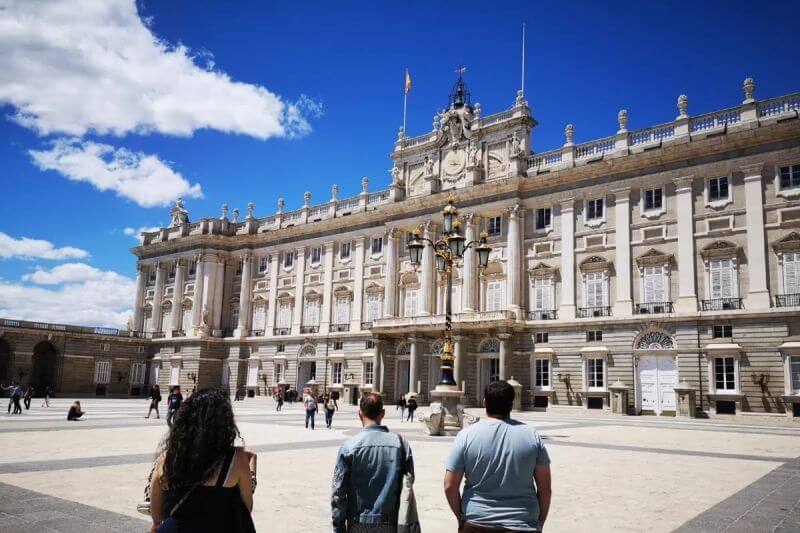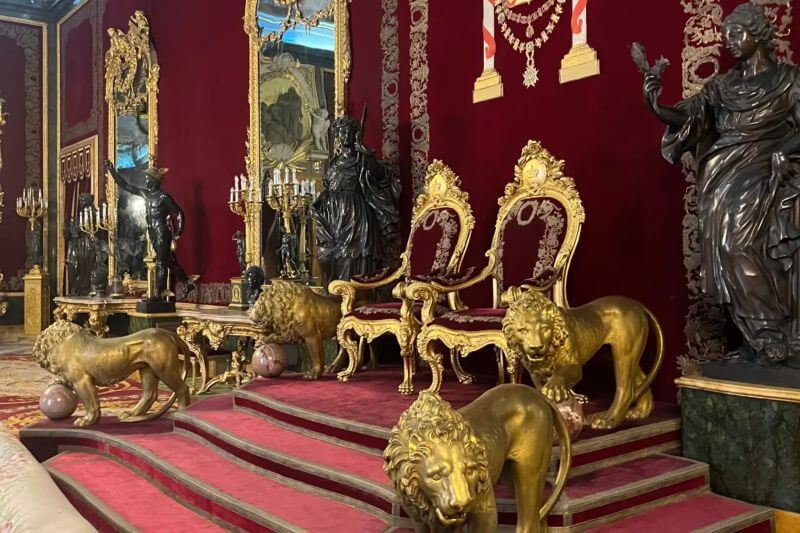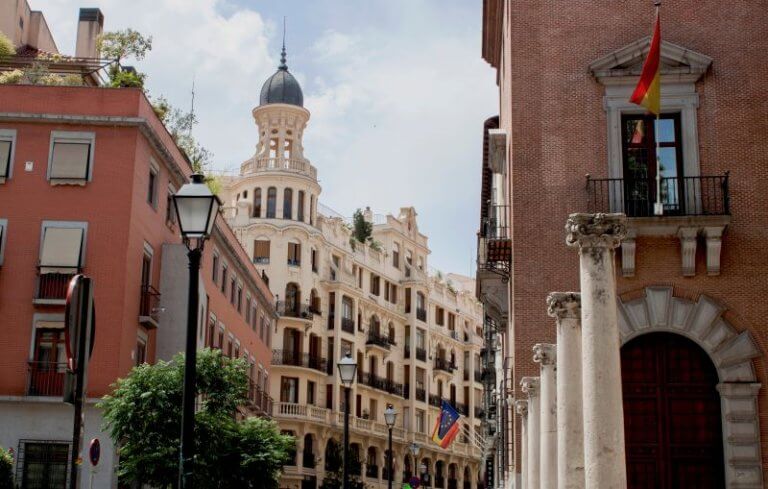If you’re planning a trip to Madrid or simply curious about one of Europe’s most majestic landmarks, you’ve come to the right place. This guide will walk you through the fascinating history, architectural wonders, and cultural treasures of the Royal Palace of Madrid.
Along the way, you’ll discover practical tips, nearby attractions, and insider advice to make your visit as smooth and memorable as possible.

Madrid’s Royal Palace, also known as the Palacio Real, is one of the most impressive monuments in the Spanish capital. As the largest functioning royal palace in Europe, and the official residence of the Spanish royal family, it attracts millions of visitors each year.
Its grand size, baroque architecture, and exquisite details set it apart from other European palaces. Whether you’re drawn by its rich history or its cultural importance, the Royal Palace Madrid remains a highlight of any visit to Spain.

The history of the palace begins with the old Alcázar, which was destroyed by fire before King Philip V commissioned the construction of the current building in the 18th century. King Charles III, often considered the palace’s greatest renovator, transformed it into a true symbol of the Spanish monarchy.
Over the centuries, it has been home to countless rulers, including Charles IV and Philip II, and continues to serve as the backdrop for state receptions and official ceremonies. Today, the Spanish royal palace represents both continuity and transformation within Spanish history.

The palace’s exterior features a grand facade, vast courtyards, and the Sabatini Gardens, while the Campo del Moro Gardens provide panoramic views and beautiful gardens worth exploring. Inside, visitors can marvel at iconic rooms such as the Throne Room, filled with gilded mirrors and ornate details, and the Royal Chapel with its breathtaking ceiling paintings.
The Gasparini Room stands out for its ornate 18th-century decoration, including a frescoed ceiling by Giovanni Battista Tiepolo, one of the most celebrated Italian painters of the Baroque period. This chamber is a prime example of the palace’s Baroque-Rococo interior design.
The palace’s grand halls, such as the Hall of Mirrors and Hall of Halberdiers, showcase architectural grandeur and historical significance, while the main staircase designed by Sabatini serves as a key architectural feature that impresses visitors upon entry.
The Royal Armoury (also spelled Royal Armory) houses one of the world’s most important collections of weapons and armor. The palace also showcases masterpieces from artists like Velázquez, Goya, Caravaggio, and El Greco, making it a treasure trove of artistic treasures within the Royal Collections Gallery.

Among the many iconic rooms, the Throne Room stands out as a symbol of royal power and grandeur, while the Royal Armoury showcases centuries of military history. The Royal Kitchen, restored to its 18th-century appearance, provides an extraordinary glimpse into the daily life of the royal family.
The Gasparini Room represents one of the palace’s most breathtaking spaces, where rococo artistry reaches its peak. This former dressing room of Charles III dazzles visitors with intricate silk wall coverings and elaborate stucco work that took craftsmen years to complete. Equally impressive is the Hall of Mirrors, where crystal chandeliers and countless mirrors create a luminous spectacle that rivals the grandeur of Versailles.
Music lovers will be captivated by the unique Stradivarius Room, home to a complete quintet of string instruments crafted by the legendary Antonio Stradivarius himself. These priceless instruments aren’t merely museum pieces—they’re still occasionally brought to life in palace concerts, filling the halls with their legendary sound.
Visitors can also explore the Royal Apartments, lavishly decorated with baroque architecture and unique furnishings, along with secret passages and even the first basement. The Royal Chapel continues to serve as an active place of worship while housing important religious art, and the Crown Room displays the actual Spanish crown jewels in all their historic splendor. Together, these rooms reveal the palace as both an official residence and a living museum where centuries of Spanish royal history come alive.

The surrounding area adds further charm to the Palacio Real. The Plaza de Oriente, with its gardens and the equestrian statue of King Philip IV, is perfect for strolling. Directly opposite stands the Almudena Cathedral, a striking counterpart to the palace’s baroque elegance.
Nearby, the Teatro Real offers world-class opera performances, while the vibrant cafés and restaurants invite visitors to relax after exploring the palace grounds. A short walk leads to Casa de Campo, Madrid’s largest park, where the views of the palace are especially striking.
Beyond its permanent displays, the Royal Palace of Madrid frequently hosts temporary exhibitions within the Royal Collections Gallery. These exhibitions feature rotating displays of paintings, tapestries, and historic artifacts that highlight Spain’s rich history and cultural diversity.
Attending a special event or exhibition can add a new dimension to your visit, offering insights that go beyond the palace’s iconic rooms and traditional highlights.

Visiting the Madrid Royal Palace is a key activity for anyone interested in history and culture. The palace is open almost daily, though schedules may vary by season. Visitors can purchase tickets online to avoid long lines at the ticket office; a major benefit of buying tickets online is saving time and ensuring entry, especially during busy periods. Guided tours are highly recommended to experience the palace at your own pace and learn fascinating stories about its rich history.
Options include audio guides, private tours, and combined cultural tours around the city. Accessibility is well considered, with facilities for those with reduced mobility and practical amenities such as cloakrooms. Photography is generally restricted in certain state rooms, so it’s best to check rules before your visit.

For a stress-free sightseeing experience, the Turbopass Madrid City Pass includes entry to the Royal Palace Madrid along with many of the city’s other highlights. It also provides access to the Royal Collections Gallery, giving visitors the chance to admire priceless works of art and historic treasures.
This city pass offers skip-the-line access, free tickets to select attractions, and the convenience of having all entries in one booking. It’s particularly valuable for short city breaks, ensuring visitors can enjoy the Royal Palace of Madrid and more without worrying about individual ticket purchases.

To make the most of your visit, plan to go early in the day or during weekdays to avoid crowds – if your travel plans allow. Tickets can be purchased online in advance, and purchasing tickets online often allows you to skip the long lines. A guided tour with an audio guide is an excellent choice if you want detailed insight while exploring on your own pace.
Families will also appreciate the palace’s engaging displays and interactive sections. Most visitors spend about two to three hours inside, though those fascinated by Spanish history may wish to stay longer.

Why is the Royal Palace of Madrid so famous? It is the largest functioning royal palace in Europe, renowned for its baroque architecture and its role as the official residence of the Spanish royal family.
Does anyone live in the palace today? While it remains the official residence, the royal family does not live there permanently.
Is there free entry? EU citizens can enjoy free entry on specific days, though most visitors will need to purchase tickets.
Do you need tickets in advance? It is highly recommended to purchase tickets online to avoid long lines at the main entrance.
How long does it take to visit? Most visitors spend two to three hours, though guided tours may extend longer if you wish to explore at your own pace.

With its rich history, breathtaking baroque architecture, and unparalleled artistic treasures, the Royal Palace of Madrid is a must-see landmark in Spain. From the grandeur of the Throne Room to the hidden details of the Royal Kitchen and Royal Apartments, every corner tells a story of the Spanish monarchy.
Whether you book a guided tour, explore at your own pace, or simply admire the palace from Plaza de Oriente, this iconic building remains one of the crown jewels of Madrid.
To make the most of your Madrid adventure, consider purchasing a Madrid City Pass, which not only includes skip-the-line access to the Royal Palace but also covers entry to other major attractions like the Prado Museum and Reina Sofía. The pass offers significant savings compared to individual tickets and eliminates the hassle of booking multiple attractions separately.
With convenient digital delivery and flexible validity periods, a city pass streamlines your itinerary planning while ensuring you don’t miss out on Madrid’s most treasured cultural sites during your visit.